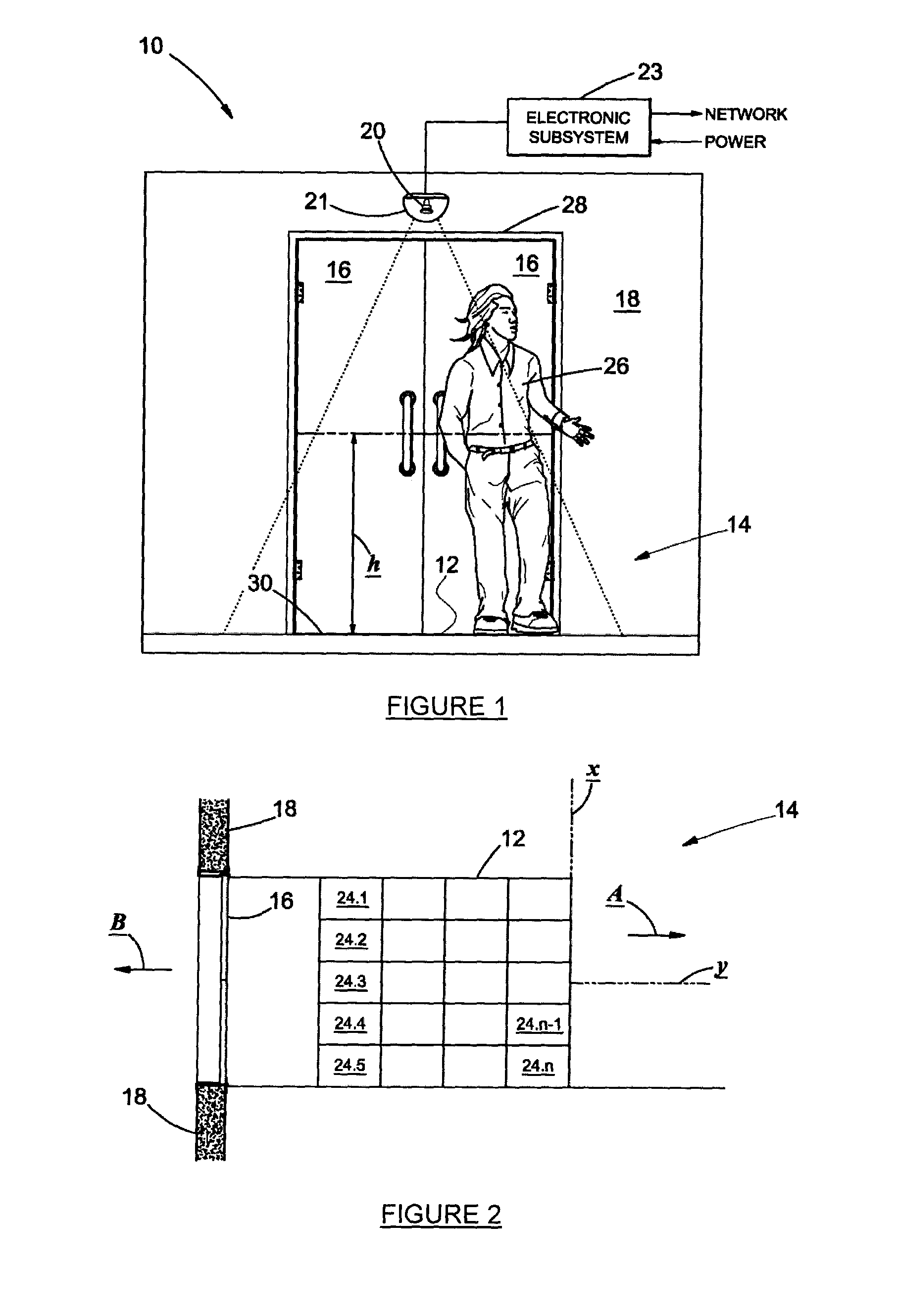Apparatus and method of classifying movement of objects in a monitoring zone
- Summary
- Abstract
- Description
- Claims
- Application Information
AI Technical Summary
Benefits of technology
Problems solved by technology
Method used
Image
Examples
Embodiment Construction
[0052]Apparatus for monitoring movement of objects through a monitoring region 12 is generally designated by reference numeral 10 in FIGS. 1 and 2.
[0053]The region 12 may form part of a portal or passage 14 at a counting point, such as an entrance 16 to a building 18 and the apparatus 10 may be deployed automatically and over a period of time to monitor and count people 26 entering and leaving the building through that entrance, as will hereinafter be described.
[0054]The apparatus 10 comprises a sensing arrangement 20 sensitive to the presence or absence of an object 26 in each of a plurality of adjacent zones 24.1 to 24.n in the region. Referring to FIG. 2, the zones 24.1 to 24.n are arranged such that there are at least two adjacent rows of zones in a first direction y (that is a general direction of flow of objects through the region) and at least two adjacent rows of zones in a direction x perpendicular to the first direction. Each zone 24.1 to 24.n is associated with a respecti...
PUM
 Login to View More
Login to View More Abstract
Description
Claims
Application Information
 Login to View More
Login to View More - R&D
- Intellectual Property
- Life Sciences
- Materials
- Tech Scout
- Unparalleled Data Quality
- Higher Quality Content
- 60% Fewer Hallucinations
Browse by: Latest US Patents, China's latest patents, Technical Efficacy Thesaurus, Application Domain, Technology Topic, Popular Technical Reports.
© 2025 PatSnap. All rights reserved.Legal|Privacy policy|Modern Slavery Act Transparency Statement|Sitemap|About US| Contact US: help@patsnap.com



